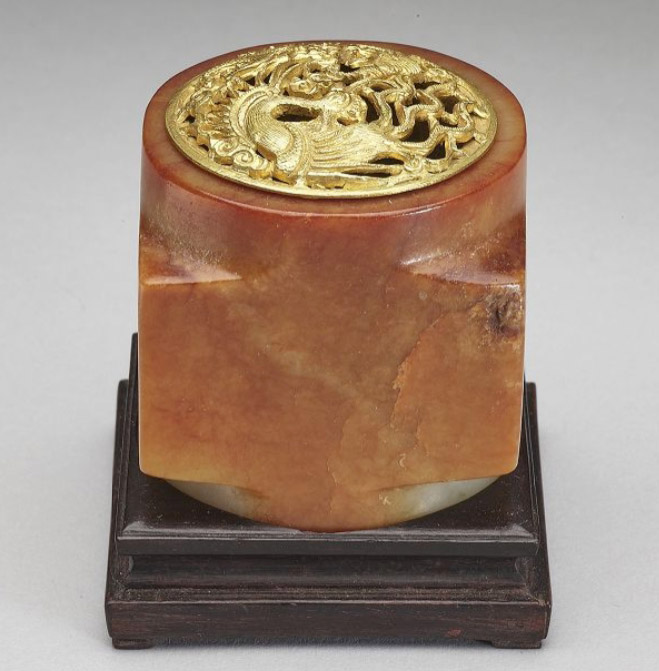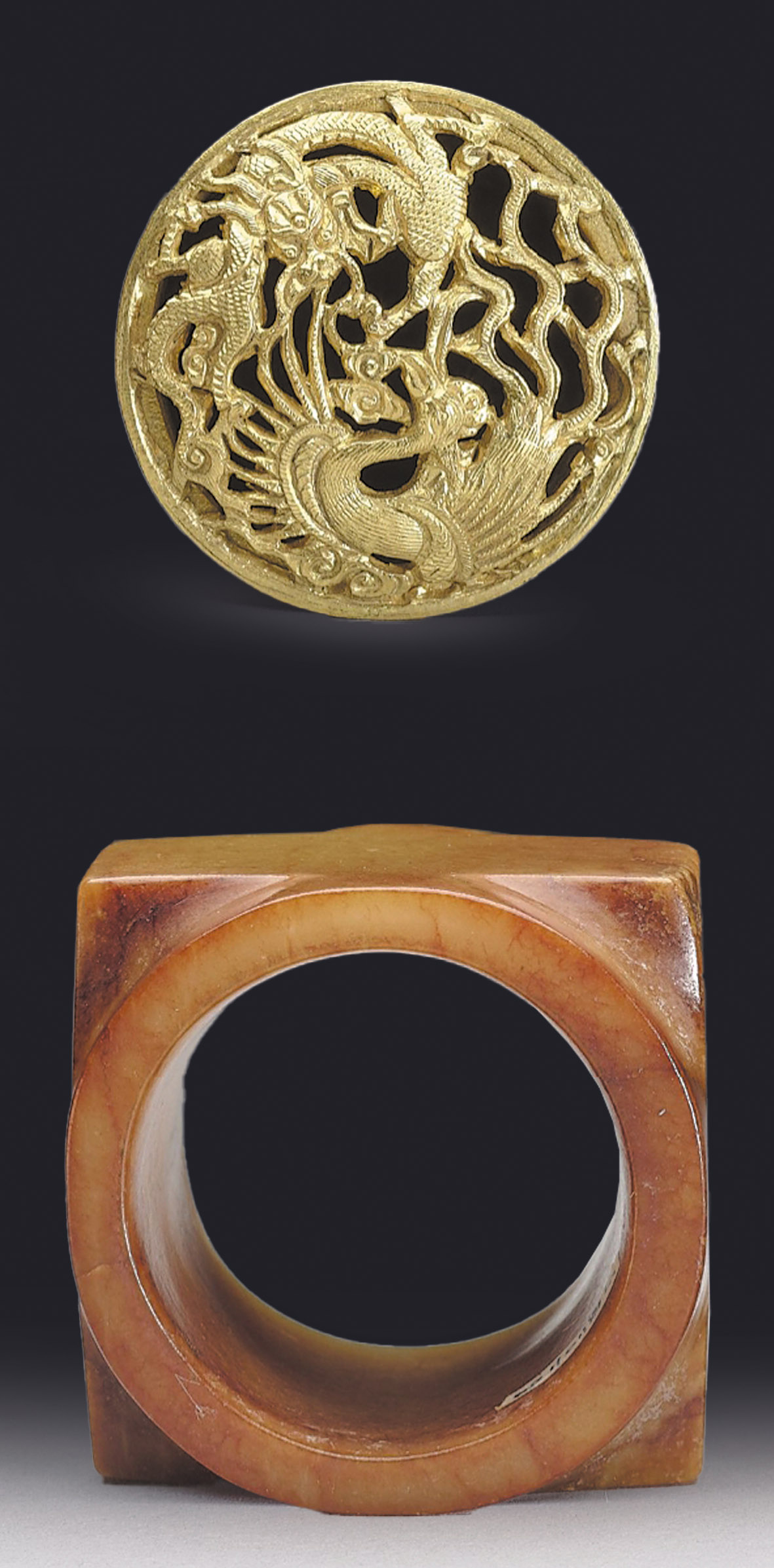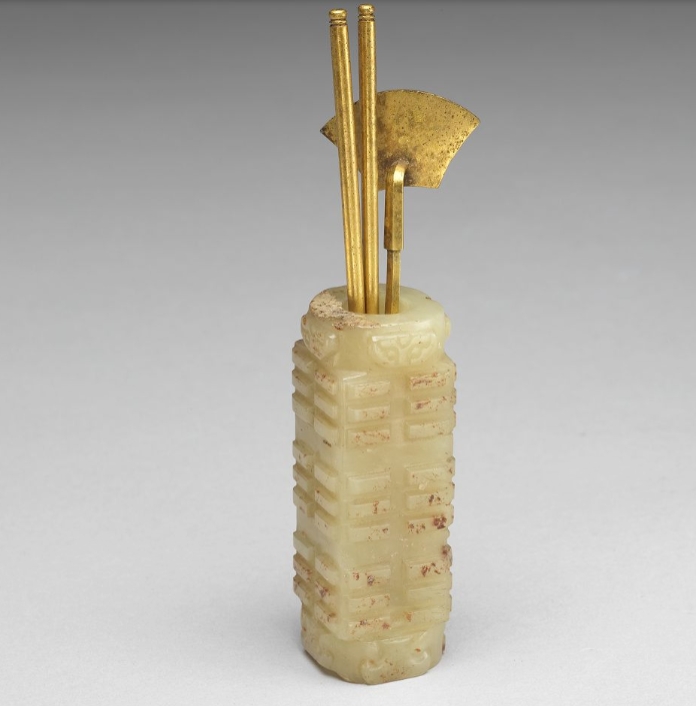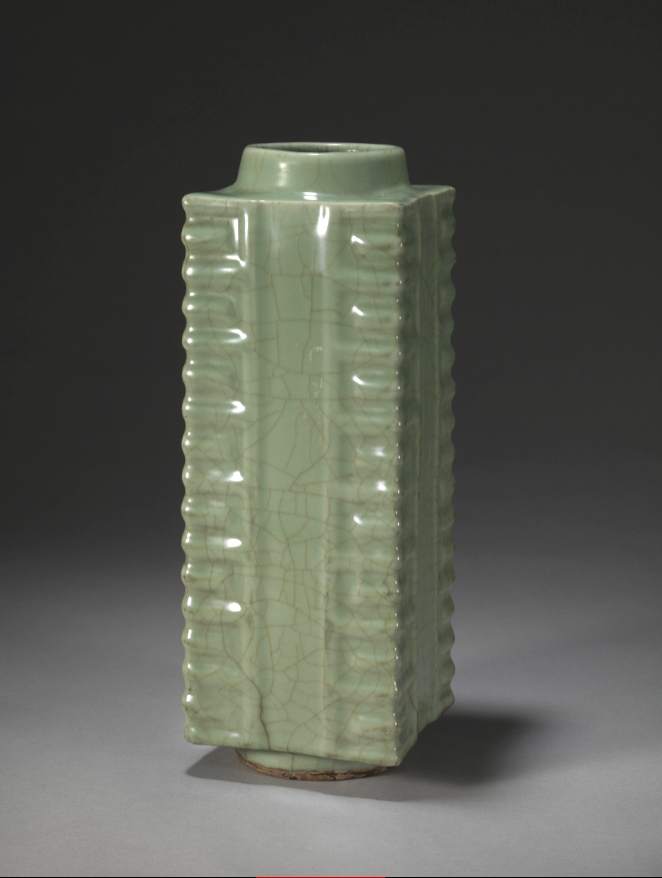Jade's appeal has moved emperors and symbolized their reigns, Zhao Xu reports.

One Chinese emperor loved jade so deeply that he commissioned countless objets d'art from the finest craftsmen, composed poems about both ancient and contemporary pieces, studied its history, and even named 14 of his 17 sons with characters evoking ritual jade or its luminosity (the remaining three died young and were never named).
This emperor was Qianlong of the Qing Dynasty (1644-1911), China's last imperial dynasty, who lived from 1711 to 1799.
A striking example of his passion is his reinterpretation of the cong, a type of ancient ritual jade featuring a cylindrical tube encased in a square prism. Believed to reflect Chinese ancestors' cosmology, the cong served as a cultural emblem and a symbol of power and belief, especially during the later stage of the Liangzhu culture (3300-2300 BC) in the Yangtze River basin.
By all evidence, Qianlong did not fully grasp the significance of the Liangzhu cong. He was unaware that these were early examples of the cong — one of six ritual jade archetypes cataloged in the 3rd-century BC text The Rites of Zhou (Zhou referring to the dynasty that ruled 11th-3rd century BC). Instead, he saw them as gangtou, a term for a carriage part connected to the axle, and had this inscription added to some pieces, confident in his own judgment.
READ MORE: Findings shed light on Sanxingdui layout
Yet, this misinterpretation did not diminish his admiration. Qianlong treasured his cong — some from Liangzhu, others from Qijia culture (2300-1500 BC) in the upper Yellow River region — and creatively repurposed them, adding metal liners and holed covers to transform them into brush holders or incense burners.
Today, while some pieces remain in Beijing's Forbidden City — where Qianlong spent almost his entire life — others are preserved in museums outside of Beijing, including Taipei's Palace Museum. (The Forbidden City, imperial palace since 1420, became a museum in 1925.)
In his 2009 book on Qianlong, Mark Elliott, Harvard professor of Chinese and Asian history, described him as a "son of heaven, man of the world". Qianlong, the second longest-reigning Chinese emperor, abdicated in 1796 after 60 years on the throne, partly to honor his revered grandfather, Emperor Kangxi, who ruled for 61 years.

Dual symbolism
Like many Chinese, Qianlong was captivated by the soft sheen and melodious tinkling of jade. A finely carved piece — a gossamer-thin jade bowl, for instance — brought him joy to behold and hold. At the same time, conscious of his Manchu heritage and the need to legitimize his reign, he recognized jade's cultural and political symbolism.
As crown prince, Qianlong wrote of jade's noble qualities, its gentle, understated luminance serving as a metaphor for a benevolent man. As emperor, he ensured a steady supply of raw jade for artisans both inside and beyond his court, sourcing it from Hotan (Xinjiang Uygur autonomous region).
Hotan jade first came to the attention of a Chinese emperor through Zhang Qian, the 2nd-century emissary whose westward journeys laid the foundations of the Ancient Silk Road. Reporting to Emperor Wudi of the Western Han Dynasty (206 BC-AD 24), Zhang described a distant region where exquisite jade could be found along rivers or deep in the mountains.
From then on, Hotan jade traveled the Silk Road to imperial capitals. The enormous material and human cost of long-distance trade meant only the most precious commodities could justify the journey. It eventually found a patron in Song Dynasty (960-1279) Emperor Zhao Ji, whose bronze wares, depicted in the Xuanhe Bogu Tu (An Inventory of Antiques From the Xuanhe Era), became templates for jade artisans.One bronze wine vessel, in particular, may have inspired a Song Dynasty jade furnace now in Beijing's Palace Museum, its wooden cover and jade top likely added during the Qing Dynasty by an emperor.

That man was likely to be Qianlong. Separated from Zhao by six and a half centuries, Qianlong harbored mixed feelings toward the Song ruler, whose mismanagement had plunged Northern Song into chaos. In 1127, with Zhao already captive to northern Jurchen forces, the weakened Song court moved south of the Yangtze, marking the start of the Southern Song Dynasty, which endured 241 years before falling to the Mongols of the Yuan Dynasty (1271-1368).
Though Qianlong dismissed Zhao as unfit for the throne, he could not conceal his admiration for Zhao's artistic achievements, particularly his painting and calligraphy. Yet, the emperor he truly sought to emulate was Zhao, the great art patron. As historian Zuo Jun, also an expert of ancient Chinese jade from the Nanjing Museum, notes: "Given that Qianlong's ancestors were the Jurchen people — known as Manchus in the 17th century — his endeavors were calculated, tied to the projection of a political image."
Of the more than 40,000 poems he composed in his long life, roughly 850 were dedicated to jade, including 280 on antique pieces he had personally handled and admired.
"Qianlong's professed love of antique jades belied a sense of entitlement to China's cultural history, instilled by his literati upbringing," notes Zuo.

Knowledge of heritage
Not unlike the Song emperor Zhao, Qianlong sought to expand knowledge of this cultural heritage through his own research, with mixed results.
"He was right perhaps half the time," says Teng Shu-ping, a leading jade expert from Taiwan. In her pioneering 2019 book, The Wisdom and Ignorance of Emperor Qianlong: Perceptions on Ancient Jade as Viewed from His Poems, Teng offers rare insights into the mind of a man who tried his best to make sense of what he could.
One notable misjudgment involved the jade cong from the prehistoric Liangzhu and Qijia cultures. Though he understood that cong was an important ritual jade, he recognized only its later forms, which bore little resemblance to the originals from 3300-1500 BC. Interestingly, he named his seventh and most beloved son Yongcong — "eternal cong" — and was heartbroken when the boy died at the age of 2.
On another occasion, the emperor mistook the protruding inner rim of a ritual jade disc for a teacup holder and had matching cups made to accompany it.
Occasional misjudgment aside, Qianlong had extended his passion to the study of foreign jade wares. In an article he wrote in 1768, the emperor examined the term "Hindustan", rightly identifying it with northern India. It mattered because "Hindustan jade" was how the emperor called the Islamic-style jade wares that had started to arrive at his court in mid-18th century, pieces that are today attributed largely to the Mughal Empire and Ottoman Empire.
Among these pieces was a jade bowl, "as thin as paper", and this was described as "simply beyond the skills of our craftsmen" to quote Qianlong. Here, he was making a clear distinction between works of great delicacy and ones that were "market-pandering and distastefully elaborate", which was how the emperor saw some of the jade wares being made in contemporary workshops in Suzhou, eastern China's Jiangsu province. And he proposed the making of antique-style pieces as a way to counter the trend, and to prevent it from causing "a disastrous waste of the precious Hotan jade" to use his words.
ALSO READ: Going back to the roots
Reflecting on Qianlong's imaginative repurposing of antique jades — using cong as censers, for example — the curator notes that he was far from the first to innovate in this way.
"In the later stage of the Liangzhu culture, artisans began making cong taller and taller. These multi-segmented forms, reaching nearly 50 centimeters, embodied the Liangzhu people's renewed attempt to communicate with the heavens above," says Zuo.
"The same design resurfaced during the Song Dynasty in the 12th century, translated into porcelain flower vases. The earliest records we have, from 16th-century Ming Dynasty (1368-1644) writings, unsurprisingly call them 'cong-style vases'."
"China never forgets," he concludes.
Contact the writer at zhaoxu@chinadaily.com.cn


